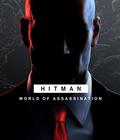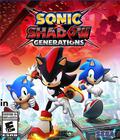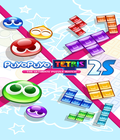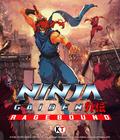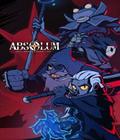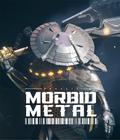Hitman: World of Assassination — Signature Edition is an interesting port for the newly released Switch 2. The original Hitman: World of Assassination was on the original Switch, but it was not done in a traditional manner. It was running off of the cloud instead of natively, so you needed to be online at all times to play it, and there was the potential for lag to muck up the gameplay. Aside from that, the cloud version of the game was marked as unplayable for the Switch 2, so owners of that version who upgraded to the new system were out of luck unless a future Switch 2 patch rectifies this. Hitman: World of Assassination — Signature Edition solves some of these issues on account of it being a more traditional version of the game, but there are still a few things that make the game less than ideal in certain situations.
The game starts off in 1999 with a nameless man being introduced to the ICA, an organization dedicated to carry out contracts that involve getting one's hands dirty. After passing the agency's various tests and the reveal that there is no recorded past, the man simply asks to be called 47 as he awaits further assignments. Twenty years later, Agent 47 becomes one of the more successful assassins the agency has ever recruited, and more difficult missions keep coming in. However, what initially seems like a series of random contracts slowly uncovers the revelation of a secret organization named Providence that controls the world. Every target in those contracts is related to said organization. As the contracts keep coming in from a mysterious figure, Agent 47 learns more about his mysterious past while also shaping the direction of the world.
Hitman: World of Assassination — Signature Edition contains all of the story missions from all three of the latest games in the series. This offers a huge advantage to those playing for the plot, as you can experience the story right away versus having to wait for months at a time before a new mission and piece of the story drops. With that said, the story is good for a quasi—political thriller, and there's enough meat to each mission to keep you intrigued about where the story goes next.
As for the gameplay, it will be instantly familiar to those who have played a prior game in the franchise. You always have a silenced pistol, piano wire, and coins in your arsenal, and this can be changed out as you level up and unlock more tools. You have your assassin's instinct to help you weed out who is a danger to you and who is your intended target, so you aren't just guessing who needs to be offed. You can knock out enemies and take their uniforms to disguise yourself, and you can knock out people before the mission goes sideways.
What makes these missions fun isn't the fact that they all take place in rather exotic locales or that almost every place is densely populated with many non—targets. What makes the missions appealing is the very loose requirements for completing your mission. So long as you kill your targets and leave without dying, you'll be fine. How you do this is all up to you. It can be something simple and inelegant, like opening fire and creating a massacre. You can sabotage a chandelier to drop or poison someone just enough to see them drop dead or run to the bathroom, so you can drown them in the toilet. Targets can get pushed from great heights or get sabotaged by explosives or distracted by rubber ducks while you sneak from behind to snap their necks. The openness of assassination gives you complete freedom to do whatever approach you wish, and while the game can devolve into trial and error in some moments, the game's quick loading makes death and save scumming fairly painless.
The good news is that World of Assassination plays into the openness of assassination by giving you the chance to replay the same missions over and over again with whatever unlocked tools you have at the moment. The game gives you several achievements that act as less overt guidelines for how you can go about your mission, such as making sure you use a specific poison type on your target or using a different character as a means to get to your target. This is combined with an online leaderboard to make this something of a score—chasing game, giving the game plenty of legs if you like being able to approach the game from several different angles.
There are a number of playable modes beyond the campaign mode that give the game a never—ending feel. Arcade mode is a set of specific self—contained missions where you kill targets unrelated to the story. Some use existing locales that have been tweaked for their respective missions, while others use new environments, but each of these missions feel just as well thought out as the main campaign ones, thanks to the presence of multiple ways of eliminating a target.
You also have Elusive Targets, which are limited time events set up by IO Interactive that give you one shot at eliminating a specific target. What makes these interesting is the fact that you have a limited number of attempts to take down that target, and that really puts on the pressure to be good very early on. Contracts mode allows you to craft your own mission using different targets in an area, and you can even dictate whether you want an elimination to be done a specific way, something that further adds to the gameplay since you can send these missions to others or download other people's creations to extend the life of the game. Sniper mode has you firmly glued to a sniper rifle aiming for specific targets, but there's still an element of stealth; shooting indiscriminately or letting bodies be found easily compromises the mission.
The main mode that will catch people's attention is Freelancer, which acts as an epilogue for the game's campaign mode. The main difference between this and the campaign mode is that the game takes on some traits synonymous with roguelites. You get to choose one of eight targets to start with, but the choices and your starting location are randomized. You can obtain gear throughout your mission, whether you find it on the field or buy it from vendors, but you lose them if they're on your person when you die. That only goes for minor targets, though, as dying to a major target means losing everything — even if you have it stored in your safehouse. Just like the limited time events, these missions can't immediately be retried once you die, so those who brute—forced their way through the main campaign by save scumming will have a tough time. For everyone else, the same creativity and tight gameplay are maintained even in this randomized structure. Just like the rest of the game, this mode ensures near—limitless gameplay for those who want to do more than chase high scores for each mission.
Despite the name of the game, this isn't a truly complete version of the title, as there's DLC still on offer in the store. Two of the packs are purely cosmetic for your various weapons, and one pack just changes the color of your suit. The Switch 2 exclusive DLC was only for pre—orders, so don't expect to get the Mario and Luigi themed colorways unless it is offered in the store later on. More disappointing is the fact that there are several missions that are only available as DLC, ranging from the Sarajevo Six to the various missions that let you play the celebrity—related assassination missions in Arcade mode; the missions were previously limited time events but are unavailable otherwise. There's still plenty of content in the title, but expect to spend some more money if you want to be up to date with content, minus the recently released LeChiffre mission.
The other thing to note about the Switch version is that while the game wants you to play it while you're connected online, you can play it offline if you want. However, you'll do so with some major caveats. First, you'll make a completely different save file for offline play, so you can't continue your online campaign while you're disconnected from the internet. Second, since scoring points requires an online connection, playing offline means that you can't level up your profile. In turn, this prevents you from unlocking any new weapons and items for use in future missions. Every mission you undertake can only be played with the default layout, so while you can consider this as practice mode, the lack of unlocks means that you're not getting the full breadth of what you can do in any given situation. This is something that the community has complained about for years, but this release further solidifies how this format isn't going to be reverted anytime soon.
The audio is quite good all around. The voice acting in the series has always been superb, and that doesn't change; everyone plays their part perfectly in conveying a world full of shady characters hiding behind a normal veneer. The music is also good but low key, as it only appears during pivotal moments, ratcheting up the tension or putting a punctuation on the victory in the process. Sound effects are also crisp to the point where each gun is distinct, as is each use of both standard and improvisational weapons. All of this is presented in true 5.1 surround sound, which makes the game more immersive than the original Switch's basic stereo sound.
The graphics are where things start to break down a bit. The good news is that, for the most part, the game can feel comparable to the PS4 in this regard. Character models are well animated and wildly detailed, something you'll come to appreciate in the Freelancer mode as you'll have to look for little details and tells on characters to determine if they're the target you're looking for. The environments also look excellent. The texture work is very clean, and the large crowds of diverse characters remains impressive considering that this type of thing still isn't present in many other current games.
The part that isn't holding up so well is the frame rate. At first glance, things seem to be all right, as the game hovers around the 30fps mark. Responsiveness doesn't suffer from bad bouts of slowdown, no matter how crowded the area gets with either people or particle effects. However, you will notice that there's no cap on the frame rate, so the game can act normally one minute and then go sky high the next minute, depending on what you're looking at. Based on the performance of various other Switch games running on the Switch 2, having an uncapped frame rate might be a good thing in the future. If Nintendo's next console follows the same pattern of emulating the system that precedes it, this would allow for a smoother frame rate by sheer brute force. As it stands now, having no cap in place makes the game look and feel rather uneven, which can be bothersome when you need some precision, and the fluctuating frame rate prevents that from happening.
In the end, Hitman: World of Assassination — Signature Edition is a solid port of a very impressive game. The game is dense in that it may be difficult, and you'll encounter lots of trial and error, but that's balanced out by the fact that each level can be completed in a nearly unlimited number of ways. The presentation may not have a solid frame rate, but it certainly looks and sounds nicer than expected from a portable console. The lack of complete content on the system is a disappointment, as is the use of a Game—Key cart versus a regular one (considering the game's size), but the mostly online—only requirement for a single—player game makes this a less desirable platform to play on, unless you can ensure that you have an online connection at all times and situations. Still, if this is the only system you have, this isn't a bad way to play a game meant for those with a vicious but creative spirit in them.
Score: 7.5/10
More articles about Hitman World Of Assassination


